
The average of international travels to and from Iran fell by 80 percent during the past Iranian calendar year 1399 (ended on March 20, 2021) from a year earlier. “During this period, 4,343,163 passengers entered the country, which included 3,030,464 Iranian passengers and 512,699 international travelers,” Mehr quoted Arezou Ghaniun, an official with the Islamic Republic of Iran's Customs Administration, as saying on Saturday. “From the beginning of 1399 to the end of it, we saw a significant reduction in passenger traffic to the country or vice versa in land, sea, rail and air borders, which were caused by various coronavirus restrictions.” International tourist arrivals to Iran plunged 72% during the first eight months of the year when compared to 2019, according to data compiled by the World Tourism Organization. Restrictions on travel introduced in response to the COVID-19 pandemic continue to hit global tourism hard, with the latest data from the UNWTO showing a 70% fall in international arrivals for the first eight months of 2020. Iran, however, has experienced different rates of downfall for inbound passengers over the past months. In the first three months of 2020 (January, February, March), the tourism industry of the country recorded negative rates of 90, 92, and 94 percent, respectively, compared to the same period last year, according to the organization. The fall reached 96 and 97 percent in April and May. And in June, a negative 84% was recorded. But the interesting point in the statistics published by the World Tourism Organization is a steep slope of the improvement of Iran’s tourism arrivals during the last two months, as such growth has leaped 35% in July and August. Optimistic forecasts, expect the country would achieve a tourism boom after coronavirus contained, believing its impact would be temporary and short-lived for a country that ranked the third fastest-growing tourism destination in 2019. According to the newest UNWTO Barometer, international arrivals plunged 81% in July and 79% in August, traditionally the two busiest months of the year and the peak of the Northern Hemisphere summer season. The drop until August represents 700 million fewer arrivals compared to the same period in 2019 and translates into a loss of US$ 730 billion in export revenues from international tourism. This is more than eight times the loss experienced on the back of the 2009 global economic and financial crisis. “This unprecedented decline is having dramatic social and economic consequences, and puts millions of jobs and businesses at risk,” warned UNWTO Secretary-General Zurab Pololikashvili. “This underlines the urgent need to safely restart tourism, in a timely and coordinated manner”. UNWTO’s Panel of Experts foresees a rebound in international tourism in the current year, mostly in the third quarter. However, some experts suggest the rebound could occur only in 2022. Travel restrictions are seen as the main barrier standing in the way of the recovery of international tourism, along with slow virus containment and low consumer confidence. The lack of coordinated response among countries to ensure harmonized protocols and coordinated restrictions, as well as the deteriorating economic environment, were also identified by experts as important obstacles for recovery. The Islamic Republic expects to reap a bonanza from its numerous tourist spots such as bazaars, museums, mosques, bridges, bathhouses, madrasas, mausoleums, churches, towers, and mansions, of which 24 being inscribed on the UNESCO World Heritage list. Under the 2025 Tourism Vision Plan, Iran aims to increase the number of tourist arrivals from 4.8 million in 2014 to 20 million in 2025.
Create: May 16, 2021 Edit: May 16, 2021 Regional News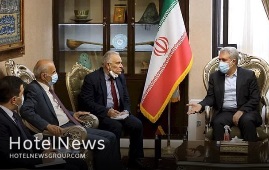
Iranian tourism minister Ali-Asghar Mounesan and Yerevan’s ambassador to Tehran Artashes Toumanian on Monday discussed ways to deepen ties in the realms of tourism and cultural heritage. The officials exchanged views on how to boost travel when the coronavirus is controlled with help of vaccines. “We are ready to increase the tourism ties between the two countries. It seems, within the next few months, the tourism sector would resume as [COVID-19] vaccination is underway worldwide,” Mounesan said. The Iranian minister attached great importance to tourism as a tool, which can foster peace and friendship between various nations. “We pay special attention to tourism with our neighbors because we believe tourism, in addition to economic matters, helps to promote friendship between the nations. Such relationship with Armenia has been improved after the [implementation of] a visa waiver [program].” The envoy, for his part, said many Armenians are not being introduced to Iran’s attractions. “The people of Armenia do not know much about Iran's tourist attractions, if [enough] information is provided and tourism officials and tour operators of the two countries work in this regard, they would be interested in traveling to Iran.” Joint work on the restoration of historical sites and monuments was another issue discussed in the Tehran meeting. “The arena of Iranian cultural heritage is important to us because it dates back to thousands of years ago,” Toumanian said. “We have good experience in the field of intangible cultural heritage and there are many similarities between the two countries in this regard. Armenian specialists can also help to restore the engravings of Iranian churches,” the ambassador explained. Talking about the coexistence of religions in Iran, Mounesan said: “In different cities of Iran, including Yazd, there are places of worship for Muslims, Jews, and Christians, which makes a nation proud. We have even managed to register several churches on the World Heritage list.” Armenian churches To the untrained eye, Iran’s earliest churches may seem modest structures to some but they bear testimony to a vast panorama of architectural and decorative scenes associated with Armenian culture blended with other regional cultures: Byzantine, Orthodox, Assyrian, Persian, and Muslim. St. Thaddeus, St. Stepanos, and the Chapel of Dzordzor are three photogenic ancient churches that constitute the Armenian Monastic Ensembles of Iran, which were collectively inscribed on the UNESCO World Heritage in 2008. They are dotted in fresh and green lands of northwest Iran and are important pilgrimage sites for Armenian-Iranians and others from across the globe. Also known as the Qareh Klise (“the Black Church”), St. Thaddeus, as one of the oldest surviving Christian monuments in the country, is situated in Chaldoran county some 20 kilometers from Maku, adjacent to the borders of Armenia, Azerbaijan, and Turkey. The Chapel of Dzordzor stands tall on the outskirts of Maku. The name narratively originates from a famous painter Hovans Yerz, known as Dzordzortzi, who supervised the chapel’s restoration for a while. The ancient Church shows off elaborate bas-reliefs of flowers, animals, and human figures on its façade and exterior walls. It bears verses of Old and New Testament in Armenian calligraphy as well.
Create: May 13, 2021 Edit: May 13, 2021 Regional News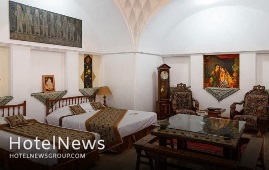
A total of 400 beds is expected to be added to the accommodation capacity of the touristic Yazd province, a local official announced on Wednesday. Ten tourism projects, which are composed of hotels and other lodging centers, are under construction across Yazd province, the official said. “Construction work has been finished on two of the projects, and the rest are complete by 70 to 90 percent.” “200 [hotel] rooms and 400 beds will be added to the accommodation capacity of Yazd when the projects come on stream,” the official said. The central province is usually referred to as a delightful place to stay, or a “don't miss” destination by almost all of its visitors. The city is home to thousands of mudbrick houses that are equipped with innovative badgirs (wind catchers), atmospheric alleyways, and many Islamic and Iranian monuments that shape its eye-catching city landscape. In July 2017, the historical structure of the capital city of Yazd was named a UNESCO World Heritage. Wedged between the northern Dasht-e Kavir and the southern Dasht-e Lut on a flat plain, the oasis city enjoys a very harmonious public-religious architecture that dates from different eras. Yazd is known today for its traditional districts, the qanat system, traditional houses, bazaars, hammams, water cisterns, mosques, synagogues, Zoroastrian temples, and the historic garden of Dolat-Abad. The city enjoys the peaceful coexistence of three religions: Islam, Judaism, and Zoroastrianism. Yazd Jameh Mosque, Dowlatabad Garden, the Yazd Atash Behram, also known as Atashkadeh-e Yazd, Towers of Silence, and adjacent desert landscape are among its tourist sites.
Create: May 8, 2021 Edit: May 8, 2021 Regional News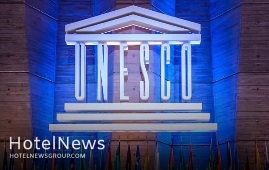
Iran seeks to register five intangible elements on UNESCO’s list of Intangible Cultural Heritage of Humanity in near future, Mehr reported on Tuesday. The country has recently submitted [revised] dossiers for the ancient festivities of Mehregan and Yalda, crafting and playing [the stringed instrument of] the Oud, traditional craft of silk spinning, and Turkmen Duzi (a kind of traditional textile being practiced by Iranian Turkman tribes), the report said. Yalda (the birth of a new sun), which is also called Yalda Night, is celebrated on the eve of the winter solstice, which falls on the last day of Azar (the last month of autumn in the Iranian calendar year). On that graceful night, the winter chill is vanquished and the warmth of love embraces the entire family. It’s a time for pleasant family reunions that entails laughter, merriment, and good cheer. According to UNESCO, Yalda ceremonies, in the best way, point to cultural diversity and human creativity, especially when one considers the wide range of the communities that celebrate it. Mehregan celebration, which falls on the 196th day of the Iranian calendar year that usually equals October 2 in the Gregorian calendar, brings together clusters of Iranian Zoroastrians to hold reunions in celebration of Mithra, an ancient goddess of friendship, affection, and love. A key feature for the event is large spreads in purple laden with various ingredients, dishes, and elements each on behalf of a particular belief. Fruits, vegetables, dried nuts, sweets, rosewater, grilled lamb meat, lotus seeds, and silver coins, and a scale are typically placed, the latter symbolizes autumnal equinox. The oud is a pear-shaped stringed instrument frequently used in Persian and Middle Eastern music whose construction is similar to that of the lute. It was thought that this musical instrument was invented by nomad tribes since it was light and mobile. Some believe it was originated in the Caucasus region, other sources report more western regions as a point of origin. Some findings show an early elliptical design of Oud found in the ruins of Shush, Iran. Some experts theorize that a priest is shown to be playing it in that depiction. The Islamic Republic expects to reap a bonanza from its numerous tourist spots such as bazaars, museums, mosques, bridges, bathhouses, madrasas, mausoleums, churches, towers, and mansions, of which 24 being inscribed on the UNESCO World Heritage list. Under the 2025 Tourism Vision Plan, Iran aims to increase the number of tourist arrivals from 4.8 million in 2014 to 20 million in 2025.
Create: May 1, 2021 Edit: May 1, 2021 Regional News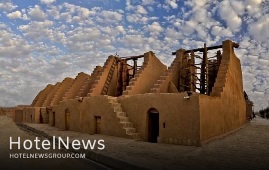
The process of preparing four caravanserais and Asbads (ancient vertical-axis windmills) in South Khorasan province is being carried out and the UNESCO assessors are projected to visit the sites by mid-May to register them in the World Heritage list. UNESCO assessors will travel to Iran for a final evaluation, and we hope to see the province's fifth property inscribed on the UNESCO World Heritage list this year, Hassan Ramezani, director-general of Cultural Heritage, Handicrafts and Tourism Department of South Khorasan said on Wednesday, ILNA reported. Located in eastern Iran, South Khorasan province is home to many historical and natural attractions such as Birjand Castle, Dragon Cave, Furg Citadel, and Polond Desert. It is also known for its famous rugs as well as its saffron and barberry which are produced in almost all parts of the province. Asbad used to be a smart technique to grind grains. It also bears testimony to the human being’s adaption with nature by transforming environmental obstacles into opportunities. Iran plans to register a wide collection of its Asbads in different provinces on the UNESCO World Heritage list. The architectural spaces of these caravanserais include entrance porches, cells, docks, stables, water reservoirs, and the royal sitting hall, and in some caravanserais, impressive and very beautiful brick decorations have been used, and this architectural style and characteristics have made these works valuable." We are trying to prioritize the excavations of Kaleh Koob site in the form of joint studies with foreign groups through the Cultural Heritage Research Institute so that we can use modern Iranian methods in exploring this site." He explained the province's progress plans in the field of cultural heritage and said: "We have some research work in the field of very rich and valuable areas of South Khorasan which we continue them to reach a clear result. One of them is the ancient site of "Kaleh Koob" around the city of Sarayan, where we have done three seasons of archeological excavations so far, and there are artifacts and remains that date back to the late Neolithic to the Bronze Age.” He continued: "We are trying to prioritize the excavations of Kaleh Koob site in the form of joint studies with foreign groups through the Cultural Heritage Research Institute so that we can use up-to-date Iranian methods in excavating this site." He also pointed out that so far three seasons of archeological excavations and speculation operations have been carried out in the area of "Takhcherabad", noting: "During the study of architectural works and evidence obtained, in the opinion of many of my colleagues and experts and archaeologists, the antiquity of this hill, which is located around Birjand, can be traced back to the Median period in terms of architecture and history. Therefore, we definitely need to continue the exploration operations in this area so that we can achieve more accurate and scientifically sound results." Ramezani pointed out: "In the field of restoration, fortunately, the Ministry of Cultural Heritage, Handicrafts and Tourism, and especially the Deputy Minister of Cultural Heritage, Dr. Talebian, had a good view and also a good knowledge and domination of the historical capacities of South Khorasan, which has made us now one of the leading provinces in the field of buildings that are being restored with the participation of owners and the private sector, and we are even restoring a large number of historical buildings with the participation of owners and the private sector." The official underlined: "Following this process, a number of historical monuments in the province will be restored this year from our partnership funds. In addition, in the field of urban and rural historical textures, due to the number of nationally registered valuable textures, this year we will also see the continuation of restoration works in the walls of the passages, flooring, and restoration of single buildings in the area of historical textures." Ramezani also announced: "By mid-May, the process of launching the Museum of Clothing and Textiles of South Khorasan, which has been completed by the private sector at the historical house "Pardeli" in Birjand, and will be put into operation during the cultural heritage week."
Create: Apr 24, 2021 Edit: Apr 24, 2021 Regional News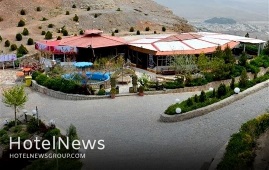
In the past Iranian year (ended March 19), 1,767 jobs were created by investing in tourism-related projects in the northwestern West Azarbaijan province. “The largest number of jobs is related to the issuance of licenses for handicraft producers, which has led to the employment of 549 persons,” Jalil Jabbari, director-general of Cultural Heritage, Tourism and Handicrafts Department of West Azarbaijan said, IRNA reported on Friday. In the year ended in March 2020, some 312 job opportunities created by tourism development projects, he added. Jabbari went on to say that 112 jobs have been created through projects implemented by the private sector and 30 jobs have been created through renovating national and world heritage sites in the province. Part of the activities of the department in the past year has been focused on documenting, exploring, demarcating, layering and studying historical monuments, he said, adding, “this has created employment for 466 persons." Jabbari concluded that 30 jobs have been created in the accommodation and hospitality sector, six in the ecotourism accommodation sector, 34 in the travel services offices, and 35 in the handicraft production units.
Create: Apr 18, 2021 Edit: Apr 18, 2021 Regional News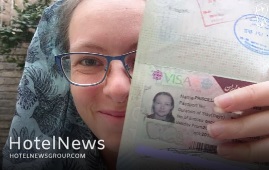
Iranian Tour Operators Association is formulating a proposal for the resumption of tourist visas after months of suspension amid strict government measures to prevent the spread of coronavirus. “Iranian visas are being granted to medical tourists… and we have requested the Foreign Ministry to issue the same permits for the applicants of other tourism arenas,” ISNA quoted Ebrahim Pourfaraj who presides the association, as saying on Monday. “In a meeting with Seyyed Kazem Sajjadi, the deputy Foreign Minister for Consular, Parliamentary, and Expatriates Affairs, I was supposed to provide some information and a plan for re-issuing [tourist] visas,” he explained. The veteran expert has asked the government to issue tourist visas for the international applicants who have been fully vaccinated against COVID-19. “The Ministry of Health and the National Headquarters for Coronavirus Control can at least agree that the international tourists who have received the [second dose of] coronavirus vaccine would be allowed to enter Iran.” Last month, he lamented that the continuation of such a trend would result in losing international tourist markets more than before. “Or at least they should make it clear so that we can respond appropriately to foreign companies and tourists to not to miss the international tourist markets more than before.” Pourfaraj believes that the reasonable prices of Iran tours are expected to bring back the boom into the tourism sector of the country in the post coronavirus era. “Attractive tour plans are also being prepared for those who are eager to explore the historical attractions and natural wonders of the ancient country and want to experience a vacation here.” Pourfaraj also expressed hope that international tour operators and companies who have worked with their Iranian counterparts for years, would put Iran back on the world’s travel route again, considering the facilities they can get at cheaper prices than in other countries. Last November, the World Tourism Organization announced that international tourist arrivals to Iran plunged 72% during the first eight months of 2020 when compared to 2019, highlighting the severe impact of COVID-19 as the main factor. Cultural Heritage, Tourism, and Handicrafts Minister Ali-Asghar Mounesan in October warned that Iran’s cultural heritage and tourism will be in a critical situation if the crises caused by the outbreak of the coronavirus continue. Last August, Mounesan said that Iran’s tourism has suffered a loss of 12 trillion rials (some $2.85 billion) since the outbreak of the coronavirus pandemic. Furthermore, the minister also noted that the coronavirus pandemic should not bring traveling to a complete standstill. “Corona is a fact, but can the virus stop tourism? Certainly not. For us, the coronavirus is a new experience in dealing with crises that teaches tourism experts around the world how to deal with such a disaster, and thankfully governments are turning this into an opportunity for better planning.” Smart and responsible traveling should replace "do not travel” recommendations, the minister stressed, adding: “In our country, Corona has caused problems in the tourism industry and the worrying point is the continuation of this trend.” “We are well aware of what the National Headquarters for Coronavirus Control proclaims [the health protocols], hence as a proposal, we have formulated some smart, responsible travel packages by the implementation of which we could have secure travels,” the minister said. He has repeatedly announced that his ministry is in full coordination with the Ministry of Health for strictly implementing health protocols in travel destinations, hospitably centers, and museums, amongst others, underlining that “people’s health is our priority.” The ancient land embraces hundreds of historical sites such as bazaars, museums, mosques, bridges, bathhouses, madrasas, mausoleums, churches, towers, and mansions, of which 24 being inscribed on the UNESCO World Heritage list. Under the 2025 Tourism Vision Plan, the country aims to increase the number of tourist arrivals from 4.8 million in 2014 to 20 million in 2025.
Create: Apr 15, 2021 Edit: Apr 15, 2021 Regional News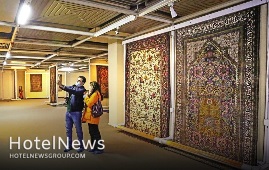
Visits to Iranian museums fell by one-fifth during the recent Iranian New Year (Noruz) holidays (March 19-April 2) in comparison to the same period two years ago, when the new coronavirus was not yet an issue. “Visits to cultural heritage museums fell by one-fifth during the Noruz holidays of the current year (1400) in comparison to the same period in the year 1398,” Mohammadreza Kargar, the director of museums and historical properties at the tourism ministry, announced on Saturday. “1,246,102 people visited cultural heritage museums [and sites] during this Noruz,” the official said without mentioning the number of visitors during the same period in 1398. Cultural heritage museums were closed during the Noruz holiday last year (1399) due to strict social distancing measures, the official said. Currently, 740 museums are active across Iran, of which 285 have been established since August 2013, when President Hassan Rouhani began his first administration, Kargar said in March. Back in 2018, he publicized that some three million historical objects were being kept at museums affiliated with the Cultural Heritage, Handicrafts, and Tourism Ministry. Iran is home to one of the world’s oldest continuous major civilizations, embracing settlements dating back to 4000 BC. It also hosts some of the world’s oldest cultural monuments including bazaars, museums, mosques, bridges, bathhouses, madrasas, gardens, rich natural, rural landscapes as well as 24 UNESCO World Heritage sites. The name of Iran, formerly known as Persia, mostly conjures up the first Persian Empire, ruled by the Achaemenids (ca. 550 – 330 BC) and sites such as Pasargadae and Persepolis. However, there are tens of prehistorical sites as the Burnt City in Sistan-Baluchestan, Tepe Sialk in Kashan, Susa and Chogha Zanbil in the Khuzestan province, and Ecbatana in Hamedan which predate the Achaemenid period. From a wider point of view, Iranian history can be divided into Pre-Islamic and Islamic eras. The Medes unified Iran as a nation and empire in 625 BC. The Islamic conquest of Persia (633–656) that put an end to the mighty Sassanid Empire (224–651) was a turning point in the history of the nation.
Create: Apr 5, 2021 Edit: Apr 5, 2021 Regional News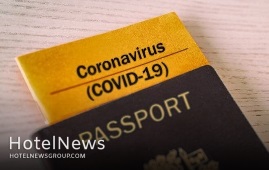
Head of the Iranian Tour Operators Association Ebrahim Pourfaraj has asked the government to issue tourist visas for the international applicants who have been fully vaccinated against COVID-19. “The Ministry of Health and the National Headquarters for Coronavirus Control can at least agree that the international tourists who have received the [second dose of] coronavirus vaccine would be allowed to enter Iran,” Pourfaraj said. He also lamented that the continuation of such a trend would result in losing international tourist markets more than before. “Or at least they should make it clear so that we can respond appropriately to foreign companies and tourists to not to miss the international tourist markets more than before.” Earlier this month, he said that the reasonable prices of Iran tours are expected to bring back the boom into the tourism sector of the country in the post coronavirus era. “Attractive tour plans are also being prepared for those who are eager to explore the historical attractions and natural wonders of the ancient country and want to experience a vacation here,” Pourfaraj said. He also expressed hope that international tour operators and companies who have worked with their Iranian counterparts for years, would put Iran back on the world’s travel route again, considering the facilities they can get at cheaper prices than in other countries. Referring to health tourism as a popular branch in Iran, he noted that medical services in Iran are provided at a lower price than what may be offered at double the price in other countries. Back in January, he announced that the tourist flow from across the world to Iran will return to normal in 2022. Although there are requests for traveling to Iran in the current year (2021), most travel agencies and tour operators believe that the flow will go back to normal in the next year, he explained. “Beginning mass vaccination against the coronavirus will provide better and safe conditions for international travels in 2022.” Last November, the World Tourism Organization announced that international tourist arrivals to Iran plunged 72% during the first eight months of 2020 when compared to 2019, highlighting the severe impact of COVID-19 as the main factor. Cultural Heritage, Tourism, and Handicrafts Minister Ali-Asghar Mounesan in October warned that Iran’s cultural heritage and tourism will be in a critical situation if the crises caused by the outbreak of the coronavirus continue. Last August, Mounesan said that Iran’s tourism has suffered a loss of 12 trillion rials (some $2.85 billion) since the outbreak of the coronavirus pandemic. Furthermore, the minister also noted that the coronavirus pandemic should not bring traveling to a complete standstill. “Corona is a fact, but can the virus stop tourism? Certainly not. For us, the coronavirus is a new experience in dealing with crises that teaches tourism experts around the world how to deal with such a disaster, and thankfully governments are turning this into an opportunity for better planning.” Smart and responsible traveling should replace "do not travel” recommendations, the minister stressed, adding: “In our country, Corona has caused problems in the tourism industry and the worrying point is the continuation of this trend.” “We are well aware of what the National Headquarters for Coronavirus Control proclaims [the health protocols], hence as a proposal, we have formulated some smart, responsible travel packages by the implementation of which we could have secure travels,” the minister said. He has repeatedly announced that his ministry is in full coordination with the Ministry of Health for strictly implementing health protocols in travel destinations, hospitably centers, and museums, amongst others, underlining that “people’s health is our priority.” The ancient land embraces hundreds of historical sites such as bazaars, museums, mosques, bridges, bathhouses, madrasas, mausoleums, churches, towers, and mansions, of which 24 being inscribed on the UNESCO World Heritage list. Under the 2025 Tourism Vision Plan, the country aims to increase the number of tourist arrivals from 4.8 million in 2014 to 20 million in 2025.
Create: Mar 16, 2021 Edit: Mar 16, 2021 Regional News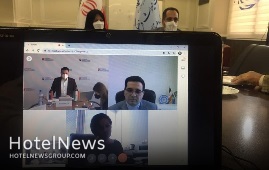
Iran and Slovakia on Thursday held an online meeting, in which high-level tourism officials, tour operators, and hoteliers discussed ways to boost tourism ties between the two countries in the post-coronavirus era. A key priority for Iran’s tourism sector is to restore tourism ties with previous markets and expand into new international markets such as Slovakia when the coronavirus crisis comes to an end, Mohammad Qasemi, the director for marketing and advertising at the tourism ministry said, IRNA reported. Regarding the unique characteristics and features of Iranian tourism as a different destination for the visitors from Slovakia, he emphasized the need for enhanced private sector relationships between the two countries to lead to the development of an efficient bilateral tourism exchange. Emphasizing the two countries’ capacity for caving, hydrotherapy, skiing, and national and natural parks, he also suggested that successful experiences be shared through training workshops and courses between the two sides. Elsewhere in his remarks, the Iranian official reminded the tremendous impact of the novel coronavirus pandemic on global tourism, adding that the Iranian government has provided support for travel businesses affected by the disease. The Slovak delegation also hailed the expansion of ties in the arenas of tourism and cultural heritage. Moreover, the Slovak Association of Tour Operators & Travel Agents (SACKA) expressed readiness to start bilateral tourism as soon as the virus is contained. The two centuries also agreed to draft a memorandum of understanding to lay the ground for further cooperation including fam tours for media personnel and tour operators. Last November, the World Tourism Organization announced that international tourist arrivals to Iran plunged 72% during the first eight months of 2020 when compared to 2019, highlighting the severe impact of COVID-19 as the main factor. Cultural Heritage, Tourism, and Handicrafts Minister Ali-Asghar Mounesan in October warned that Iran’s cultural heritage and tourism will be in a critical situation if the crises caused by the outbreak of the coronavirus continue. Last August, Mounesan said that Iran’s tourism has suffered a loss of 12 trillion rials (some $2.85 billion) since the outbreak of the coronavirus pandemic. He also noted that the coronavirus pandemic should not bring traveling to a complete standstill. “Corona is a fact, but can the virus stop tourism? Certainly not. For us, the coronavirus is a new experience in dealing with crises that teaches tourism experts around the world how to deal with such a disaster, and thankfully governments are turning this into an opportunity for better planning.” Optimistic forecasts, however, expect Iran to achieve a tourism boom after coronavirus contained, believing its impact would be temporary and short-lived for a country that ranked the third fastest-growing tourism destination in 2019. The latest available data show eight million tourists visited the Islamic Republic during the first ten months of the past Iranian calendar year (started March 21, 2019). Iran welcomed some 7.8 million foreign nationals a year earlier, achieving a 52.5 percent increase year on year. The ancient land embraces hundreds of historical sites such as bazaars, museums, mosques, bridges, bathhouses, madrasas, mausoleums, churches, towers, and mansions, of which 24 being inscribed on the UNESCO World Heritage list. Under the 2025 Tourism Vision Plan, the country aims to increase the number of tourist arrivals from 4.8 million in 2014 to 20 million in 2025.
Create: Mar 13, 2021 Edit: Mar 13, 2021 Regional News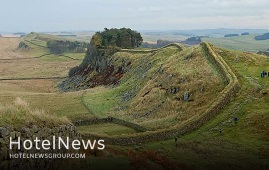
Iran will set aside ten billion rials (some $240,000 at the official exchange rate of 42,000 rials per dollar) for the restoration of the Great Wall of Gorgan, Cultural Heritage, Tourism and Handicrafts Minister Ali-Asghar Mounesan said on Sunday. Situated in the city of Gorgan, the capital of northern Golestan province, the defensive wall is about 200 km in length, and it was built to prevent the invasion of the northern tribes. It is said to be the longest architectural work of ancient Iran, which was built in 90 years. “We will allocate one billion tomans (ten billion rials) of credit for the restoration of the Great Wall of Gorgan, so that with this credit, the measures for the restoration of this wall, along with aerial imaging and mapping, will be carried out as preliminaries for [the possible] UNESCO registration,” Mounesan said. The minister made the remarks in a meeting with provincial officials and cultural figures during his visit to the lush green province. Last December, Mounesan’s deputy for cultural heritage, Mohammad-Hassan Talebian, said: “Gaining a UNESCO tag for the Great Wall of Gorgan -- one of the longest brick barriers of the ancient world -- is not hard as it is comparable to the Great Wall of China in terms of age, function, and size.” Although there are some issues and obstacles, further efforts to preserve and restore the millennia-old wall could be an acceptable justification for UNESCO to add this structure to the World Heritage list, Talebian explained. To get to that point, complete and accurate mapping of the remnants of the wall is needed, for which a budget of 20 billion rials ($476,000 at the official rate of 42,000 rials) has been allocated so far official added. He also noted that if the mapping project comes to an end by the end of the current Iranian year 1399 (March 20, 2021), the inscription of the wall on the World Heritage list would be discussed and possibly approved by the end of the next summer. Also known as Red Wall, which in some ancient texts is referred to as the Red Snake, this wall is the longest brick ancient barrier between Central Europe and China, longer than Hadrian’s Wall and the Antonine Wall put together and the third-largest wall in the world after the walls of China and Germany. Most parts of the gigantic monument are still hidden underneath the surface through some segments that have so far been unearthed and even restored to former glory. Archaeological excavations have so far identified ditches, brick kilns, earthen dams, water canals, 38 forts, and watchtowers attached to the wall, and more than 25 castles in the southern margin of the wall as well as several ancient sites from prehistoric, historic, and Islamic eras. The gigantic barrier is also more than three times the length of the longest late Roman defensive wall built from scratch, the Anastasian Wall west of Constantinople. The combined area of the forts on the Gorgan Wall exceeds that of those on Hadrian’s Wall about threefold. According to UNESCO, the Gorgan Wall is remarkable not only in terms of its physical scale but even more so in terms of its technical sophistication. To enable construction works, canals had to be dug along the course of the defensive barrier to provide the water needed for brick production. These canals received their water from supplier canals, which bridged the Gorgan River via qanats. One of these, the Sadd-e Garkaz, survives to 700 m in length and 20 m in height but was originally almost one kilometer long. The Gorgan Wall and its associated ancient military monuments provide a unique testimony to the engineering skills and military organization of the Sassanian Empire. They help to explain its geographic extent, from Mesopotamia to the west of the Indian Subcontinent, and how effective border defense contributed to the Empire’s prosperity in the interior and its longevity. These monuments are, in terms of their scale, historical importance, and sophistication, of global significance. Golestan is reportedly embracing some 2,500 historical and natural sites, with UNESCO-registered Gonbad-e Qabus – a one-millennium-old brick tower – amongst its most famous.
Create: Mar 9, 2021 Edit: Mar 9, 2021 Regional News
SALA Hospitality Group, Thailand’s homegrown design-led hospitality company, has unveiled the latest addition to its curated collection of beachfront resorts and boutique hotels: sala bang pa-in, a chic and stylish new riverside retreat that allows guests to escape the city, unwind in nature and learn about Thai history. With a fleet of boats awaiting to transport guests on immersive excursions, including complimentary transfers to and from the Summer Palace, every traveller can uncover the rich heritage of a charming yet relatively undiscovered part of the Kingdom. Scheduled to open its doors on 1st May 2021, sala bang pa-in will become the group’s ninth property in Thailand and the fifth member of sala boutique, a portfolio of intimate hotels situated in picturesque locations, many of which are filled with historical significance. Nestled on an island in the Chao Phraya River between Ayutthaya and Bangkok, Thailand’s ancient and modern capitals, Bang Pa-in is an exceptional addition to this anthology. This also marks the latest collaboration between SALA Hospitality Group and Twitee Vajrabhaya Teparkum from the Department of Architecture Co., the acclaimed Bangkok-based design studio, following the successful openings of Six Senses Samui and SALA Phuket Mai Khao Beach Resort. In the era of the Ayutthaya Kingdom, it is said that King Ekathosarot (reign from 1605 to 1620) was shipwrecked on an island in the Chao Phraya, Thailand’s “River of Kings”, as he sailed to the royal palace. There he met a woman living on the island and fell in love. Their alleged son, King Prasat Thong (reign from 1629 or 1630 to 1656) decided to build a palace in Bang Pa-in, as a tribute to the home of his mother[1]. Today, this “Summer Palace” remains an enchanting attraction that echoes the elegance of a bygone era, and guests at sala bang pa-in will be able to discover its secrets with complimentary daily boat services. Celebrating this destination’s vivid backstory and natural beauty, sala bang pa-in is a contemporary boutique retreat that puts guests on the doorstep of the Summer Palace. The hotel houses just 24 deluxe rooms and pool villas, all of which reflect a modern minimalist design concept and cutting-edge technology, such as high-end sound systems with smartphone connectivity, LED TVs and Espresso machines in every villa. Each spa-inspired bathroom comprises a separate bathtub and rain shower, and all 10 villas open out onto expansive riverside terraces with daybeds and private pools. The top room category, the spectacular three-bedroom river view presidential pool villa, offers 484 square metres of indoor and alfresco living space, making it ideal for families and groups of friends. Endless days can be spent exploring this intriguing area aboard the hotel’s own handcrafted 40ft wooden motorboat built by a renowned local boat builder in Ayutthaya, which offers river cruises to the Summer Palace (included in the room rate), along with daily sightseeing tours and sunset cocktail cruises. Alternatively, a luxurious 26ft speedboat is available for half- and full-day private charters and intimate group events. Bang Pa-in is an enticing option for visitors who want to embrace the great outdoors, with plenty of scenic cycling routes to and from the hotel, including a 50km loop that encompasses Ayutthaya and the Summer Palace, and secure bike parking at the hotel. Guests can also jog along a path that winds around the property and along the riverbank, relax with in-room spa and massage services, or plunge into the inviting outdoor swimming pool, which stretches 30 metres along the waterfront. Delectable dining experiences can be enjoyed at sala bang pa-in eatery and bar, its riverside restaurant. The menu of Thai and international cuisine highlights ingredients grown in the hotel’s onsite garden, accompanied by global wines, craft beers and creative cocktails. Indoor and outdoor seating is available with panoramic vistas. Within a short driving distance of Bangkok, sala bang pa-in is also an outstanding destination for out-of-town events, weddings and company away days. The 2nd floor multi-purpose meeting room, with its balcony and floor-to-ceiling glass doors, can host inspiring gatherings of up to 20 delegates, the 240sqm river-facing lawn is ideal for weddings, and the entire property can be reserved for unforgettable social or corporate occasions. sala bang pa-in will be led by Mr. Volkert Geertsen, a highly respected international hotelier and Cluster General Manager for sala boutique. The Chao Phraya is a legendary river that weaves timeless tales of Thailand’s past as it winds through the landscape. Now for the first time, curious explorers can discover the fables and folklore of Bang Pa-in, the home of the Summer Palace, while staying in a boutique hotel that delivers world-class experiences for couples, families and groups alike. Just a short distance from Bangkok, yet surrounded by unspoiled scenery, this is a captivating destination for urbanites who want to escape the city and unwind in peace and tranquility. We look forward to welcoming guests to sala bang pa-in, demonstrating our trademark sense of style and showcasing the grace and grandeur of Old Siam,” Mr. Geertsen commented. sala bang pa-in joins sala rattanakosin Bangkok, sala lanna Chiang Mai, sala ayutthaya and sala khaoyai in the sala boutique portfolio. Like all its sister hotels, it infuses the genuine warmth of Thai hospitality with a focus on authentic art, design and culinary creativity. And of course, guests can rest assured that their health and hygiene is SALA Hospitality Group’s top priority. Every property adheres to the SALA Safe programme, which ensures the safety of customers whilst preserving the core guest experience. The full list of measures can be found on the SALA Hospitality Group website. sala bang pa-in is located just 60km north of downtown Bangkok, 28km from the UNESCO World Heritage-listed Ayutthaya Historical Park, 41km from Don Mueang International Airport and 74km from Suvarnabhumi International Airport, making it ideal for domestic and international visitors alike.
Create: Mar 6, 2021 Edit: Mar 6, 2021 International News
